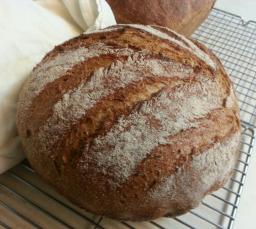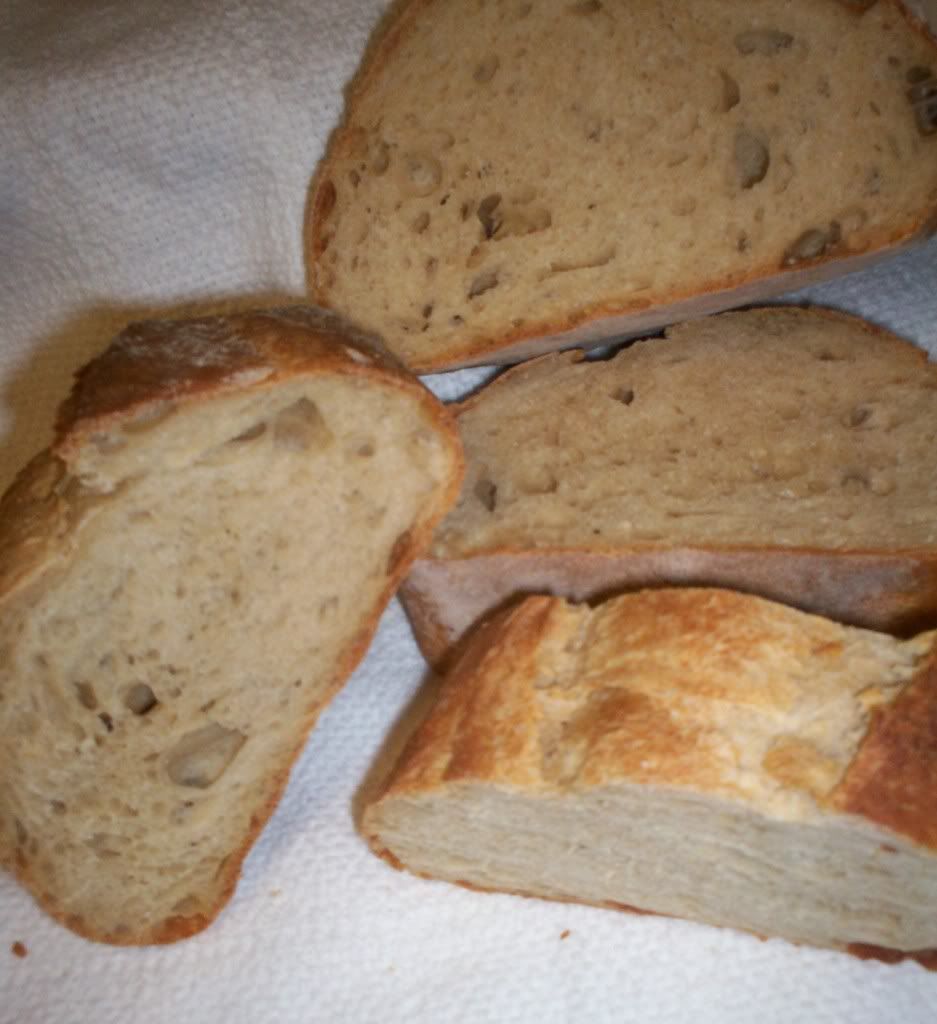For the few and the brave...
The time has arrived to bake the second batch of hand milled white flour. This flour was the "pure white" flour that was milled on 27 Feb. This has been aging in an uncovered container since then.
Once again, I used my standard baguette recipe. However after using the last of my last batch of white flour to make a pizza on Friday, I had some thoughts. The last batch of flour performed very poorly for pizza. Not that the crust wasn't crispy and tasty (because it was) but the rise had no oomph. I considered that white flour is usually malted and that this lackadaisical rise bore all of the signs of a lack of alpha amylase action.
So this batch of flour was malted. I used a scant 1/8 teaspoon of diastatic malt to 15 oz of flour and blended it thoroughly. I then proceeded to do my levain build for my baguettes.
This time the levain was very comparable to that prepared with commercial flour. If I was forced to find a difference, it would be that it was ever so slightly darker in color.
The mixing of the dough went as I would have experienced with commercial flour.
The bulk fermentation was also very much like what I have experienced with commercial flour, and, truth be told, it was a bit more lively than my last week's batch.
During shaping, I felt no real difference this time; it felt like what I bake every week.
After an hour for the final ferment, the loaves felt properly "proofed" which is what I would expect from commercial flour. They were loaded, the oven steamed "as usual" and baked.
The final result is pictured below. Alas, the passing week has not improved my photography skills.


Compared to last week's loaves these are much better balanced. The sacrifice in grigne comes from a more thorough final ferment. The more thorough fermentation process has produced that good old open crumb that I have come to expect from commercial flour. It had the proper translucent quality and was not a bit gummy (as it would be if I over malted.)
The taste? Like I baked with commercial flour. I like it, but it really isn't much different than what I bake every week.
Would I mill this flour again? Perhaps. With a yield of 15 oz of flour from 2 pounds of wheat berries, one must regard this as a luxury flour. The increment in taste - except for that sweet, sweet taste that comes from knowing that I can hand mill a flour that is every bit as good as a high quality commercial flour - is not really worth the effort. The dramatic change in fermentation behavior must be attributed to the malting of the flour. Remember it is less than .05 oz per 15 oz of flour - as we see; a little goes a long way. What I may work at is developing a semi-white flour and make sure that I malt it properly.
When I pick up a sack of all purpose flour, I handle it gently. I have a deep appreciation for what this really means.
Happy Milling!












